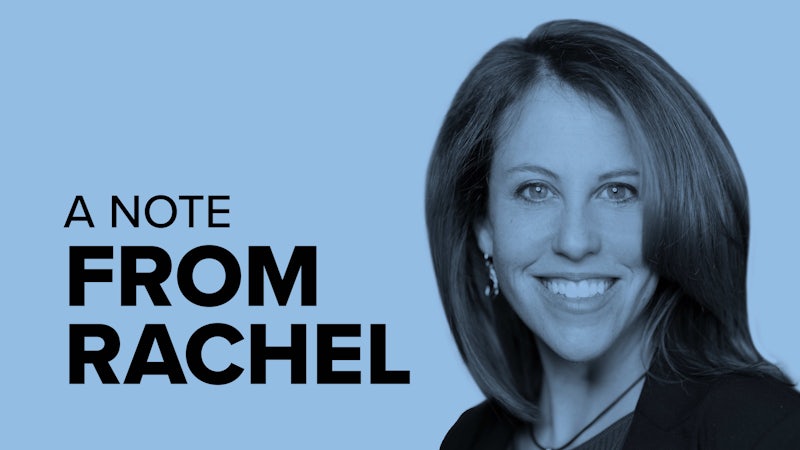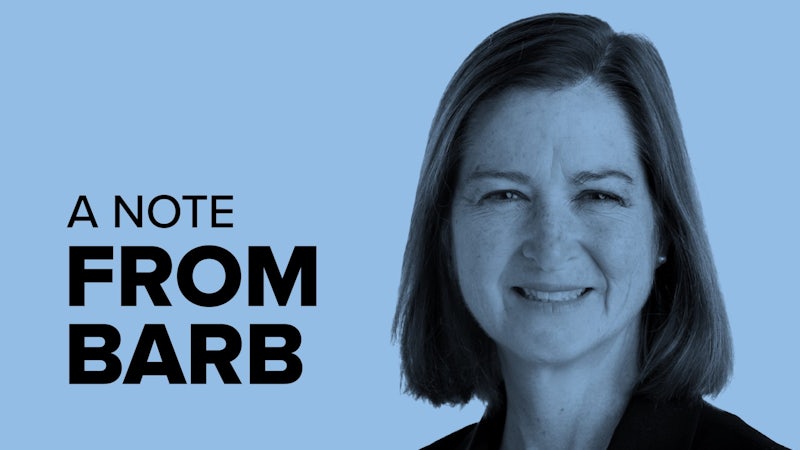Notes from Melissa are part of Insider. Sign up here: cafe.com/insider
By Melissa Murray
Dear Listener,
Over the last fifteen months, the COVID-19 pandemic has highlighted existing inequalities in American society, from disparities in healthcare quality and coverage to housing and employment insecurity. But critically, the pandemic has also exacerbated inequalities, particularly those that exist within the family. As work and school activities have shifted from the physical domain of the public sphere to the home, and employment has become more precarious, more and more Americans have found themselves struggling to reconcile the demands of the workplace with household responsibilities and their new roles shepherding children through the travails of remote education. Not surprisingly, the onus of this new normal has fallen on women.
Forced to bear the brunt of these expanded caregiving responsibilities without the network of schools, daycare centers, and childcare providers that once was available to help shoulder the burden, women have left the workforce in record numbers. And the women who once provided caregiving support as nannies and daycare workers have watched their livelihoods wither as parents weighed the risk of disease transmission against the need for these crucial services. The consequences of the exodus of women from the workforce, and the cratering of industries like hospitality and retail, where women were overrepresented, cannot be understated. As some have argued, this “she-cession” could erase decades of hard-won progress for working women.
I don’t profess to have a solution to the economic agita that has befallen American women, nor do I have a prescription for disrupting the gendered nature of caregiving that has long persisted in our society. Instead, I want to note the discourse that has accompanied these developments. Throughout the pandemic, coverage of the childcare crisis has focused largely on the family and its members’ inability to balance the increased demands of work and caregiving. There have been no shortage of news stories discussing the skewed allocation of caregiving responsibilities between men and women—the idea being that if men could just assume their fair share of the workload, women would not be forced to leave the workforce to deal with remote school and childcare.
To be sure, this focus on the family reflects extant policy choices. Much of American social welfare policy is organized around the idea that the family is principally responsible for accommodating dependency. On this account, the family is responsible for both the physical work of caregiving, which typically falls to women, and the economic labor that financially accommodates dependency, which typically falls to men.
But framing dependency as a private, family matter and as a disparity between men and women in the allocation of family and household responsibilities pulls focus from another actor that also plays a role in creating and exacerbating these inequalities: the state. Indeed, amidst the media coverage of the difficulties that families are facing during the pandemic, there has been little mention of the state’s role in cultivating our existing landscape. Nor has there been discussion of the state’s longstanding use of the family as a means of privatizing dependency and care.
The state of public schooling during the pandemic is emblematic of this dynamic. As schools were shuttered and instruction shifted to remote learning, it became clear that, for many Americans, school does not simply serve an educational function; it is also a critical part of the childcare infrastructure that allows many to participate in the workplace and economy. Indeed, in the absence of in-person schooling, it became painfully obvious that, outside of school, there is actually very little state support, and almost no public infrastructure, for caregiving and caregivers. When education shifted to online platforms, already-overburdened families were forced to assume greater responsibility for a crucial state function—educating children. And in the face of this privatization, those with ample resources have, as ever, been able to supplement these gaps with private solutions.
Consider the efforts to reopen schools in Fall 2020. In the absence of clear federal or state guidance, school districts had to make difficult decisions with limited information. In many cases, these districts were unprepared for the work that would attend reopening, such as designing a remote instructional system and sanitizing and equipping school facilities for socially distanced learning. Once again, many districts relied on families to fill those gaps.
Unsurprisingly, families in affluent communities deftly implemented solutions, at both the institutional and individual student level, to combat the pandemic’s impact on education. In wealthier neighborhoods or neighborhoods with a high incidence of parents with professional backgrounds, schools could draw on expertise and resources within their own communities to address reopening concerns. Parents who were architects, physicians, or epidemiologists, for example, could lend their expertise, free of charge, to ensure a more successful reopening. By contrast, schools in less-affluent communities were tasked with crafting their own plans with limited guidance and access to fewer resources. This dynamic not only exacerbates inequalities between schools and communities, such as disparities in access to basic needs, physical and mental health resources, and technology, but it also further entrenches the state’s reliance on the family as a means of privatizing functions that should ostensibly be discharged by the state.
And for those families who pursued fully remote learning, the impulse toward privatization was even more pronounced. Eager to maintain some modicum of normal socialization and safety for their children in a remote environment, many families opted to form “pods” in which a small group of students learn together under the supervision of adults in the family, or, in some cases, a hired instructor. Indeed, an entire teacher-for-hire industry bloomed during the pandemic. For those with the deepest pockets, there were tonier options still: luxury resorts offered “academy” packages where students had access to test-prep tutoring, art electives and movement breaks, or “hands-on” learning programs that outfitted students with full classroom setups—and the assurance of safety—in their upscale facilities.
But these privatized responses to a collective catastrophe come at an economic and social cost. Some argue that “pandemic pods” are an extreme example of the “opportunity hoarding” that further exacerbates educational disparities, and that these private solutions further heighten racial disparities in educational quality by contributing to an already-segregated school system. For example, parents who administer pods may have particular requirements aimed at promoting optimal safety and minimizing disease exposure and transmission. This may mean limiting pod invitations to those families whose situations appear “safe” or less risky—that is, families that they already know and trust, as opposed to the families of frontline workers or those who live in situations that present a greater risk for disease transmission. Such impulses may compound racial and socioeconomic disadvantages.
Again, I have no easy answers to the difficulties of the pandemic and beyond. But as the pandemic has made clear, the relentless focus on individual-level decisionmaking avoids the more pressing question of whether our current social welfare model, with its reliance on the market and the family, continues to make sense in a society with endemic racial and socioeconomic inequities, uneven access to health care and childcare, and uneven educational and employment prospects. Put differently, centering the discussion on how individual families have (or have not) adapted to the COVID-19 crisis—and indeed, any crisis—ignores the reality that the family’s efforts to shoulder these incredible pressures are inextricably tied to the failures of the American welfare state.
But if the pandemic has laid bare these inequalities and the threadbare safety net available to families, it also provides an opportunity for interrogating these defaults and imagining something else. It is only in recentering the state, and being clear-eyed about its conscription of the family (and those within it) in the discharge of public functions, that we confront the inequalities that are produced—and exacerbated—by the privatization of care.
Stay Informed,
Melissa


























